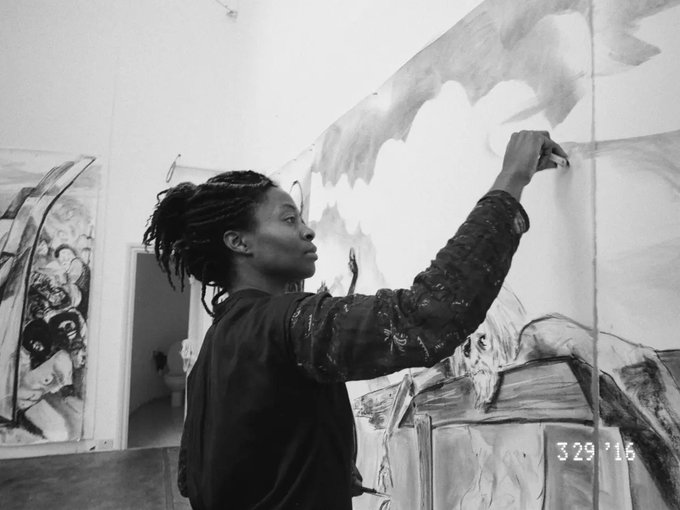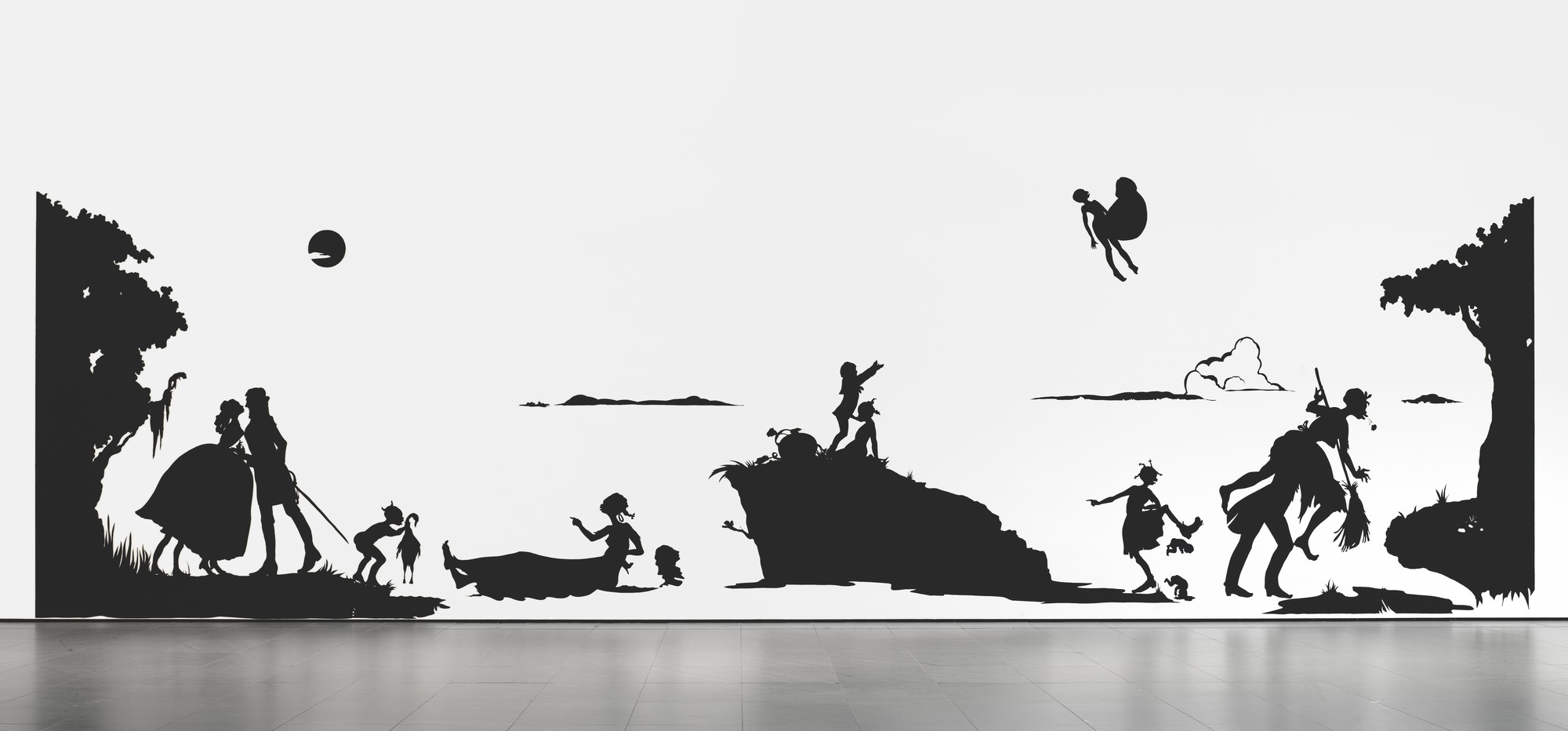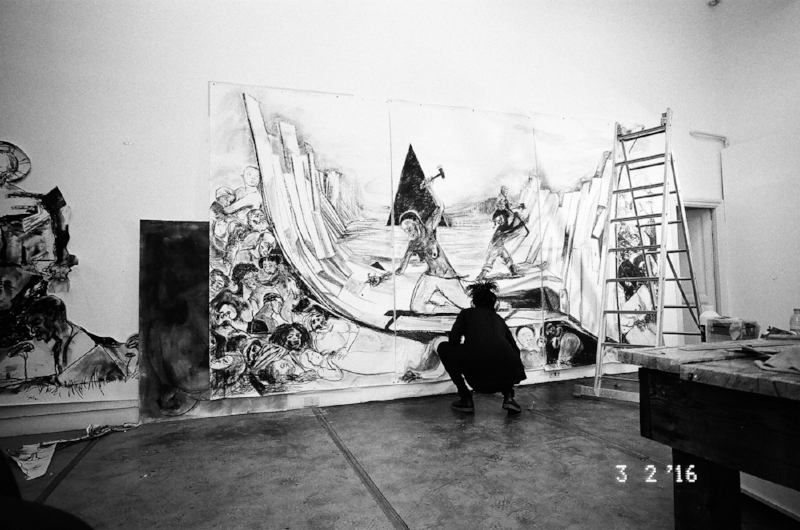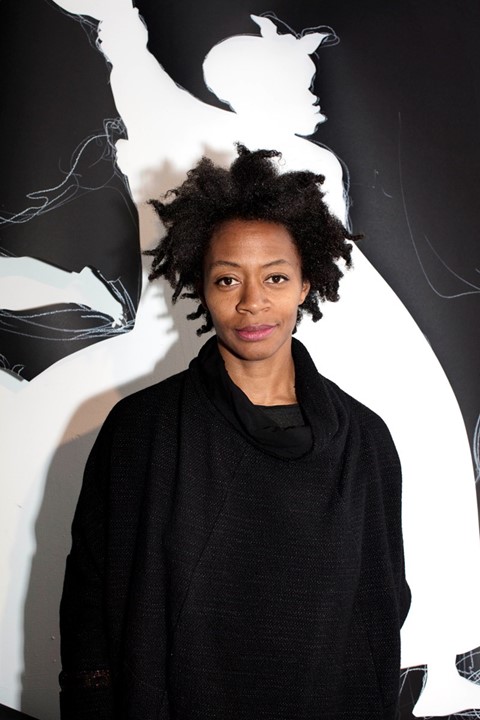Kara Walker is a U.S contemporary painter, silhouettist, installation artist, print-maker, and film-maker, known for her exploration of themes on race, gender role, violence and cultural identity.

She was born in 1969 in California, however her family moved to the state of Georgia when she was 13 years old due to her artist father’s work commitments. Her new home was an area that still held rallies by the white supremacist Klu Klux Klan, a shock to Walker after the more relaxed atmosphere of her early years. It was here that she faced regular racial abuse during her education. The young artist, therefore, was often afraid to address issues of race during this period in her artworks, however her youthful experiences would fortify her expression in later life, on a journey leading to international artistic acclaim.
Walker states of her early years;
“I was really trying to explore the problematics of making art as a young black woman, when constantly barraged and faced with a host of stereotypes about what it even means to be a young black woman.”

After later gaining a Masters In Art at the Rhode Island School of Design in 1994, one of her first works to capture world attention was her 15 meter long panoramic frieze entitled ‘Gone: An Historical Romance of a Civil War as It Occurred b’tween the Dusky Thighs of One Young Negress and Her Heart’ (1994). The work sought to rewrite a ‘Gone with the Wind’ style, mythological past on slavery and power relations by exploring, as the artist herself said “a sadomasochistic construct that underlies the American history narrative”.

Walker sought to lay bare the injustices of racism and abuses of white cultural and economic power by using the medium of the black silhouette on a white background. The information for the viewer is literally in black and white, a metaphor for race, created as a powerful, stark and confrontational message. However, the medium of the silhouette also bypasses details, so is paradoxically unclear and potentially misleading. Walker states of her work;
“I really liked that association, there’s a similarity between the silhouette and other types of stereotyping, racial stereotyping in particular”.

Continuing to create a huge body of work, Walker has reimagined, subverted and challenged ideas embedded in historical art and genre painting by exposing the rotten underbelly of a dark past. She pays particular attention to the plight of African American women and the combined attacks of racism plus misogynistic abuse and in doing so, does not shy away from images such as rape.
Walker created a huge sculptural work using materials such as sugar during 2014 of a naked black woman in the form of the Sphinx entitled ‘A Subtlety’. It is a work that has layers of meaning. The story of Western sugar consumption is entwined with slavery, but the artwork not only reminds the viewer of the interactive relationship between capitalism, power and gross oppression. The positioning of the sculpture links to the abuse of women, a not so sweet consequence of white male power.

Walker also does not hide from images of lynching or mutilation and many other horrors inflicted on those othered as subhuman. The artist’s work, however, was never intended to simply address a bygone age, but how historical attitudes and events relate to our present. Walker, herself, recognises the Black Lives Matters campaign as “the current incarnation of a civil rights movement” under the shadow of racist figures such as Trump. Her latest works explore not only the history of black oppression but also efforts to create change, which the artist reflects without sentiment and often in terms of nightmarish violence and grotesque suppression.
 The Republic of New Afrika at a Crossroads, 2016. Kara Walker
The Republic of New Afrika at a Crossroads, 2016. Kara Walker
Whether in the fields of Southern states U.S. plantations or on the streets of Minneapolis, Walker captures a centuries long struggle. Her work is a shocking kick to the guts, created to express an absence of humanity, coupled with a vital and ever needed reminder of it. In doing so, Kara Walker is one of the most significant artists of our age.

“As soon as you start telling the story of racism, you start reliving the story,” Walker states “You keep creating a monster that swallows you”.

